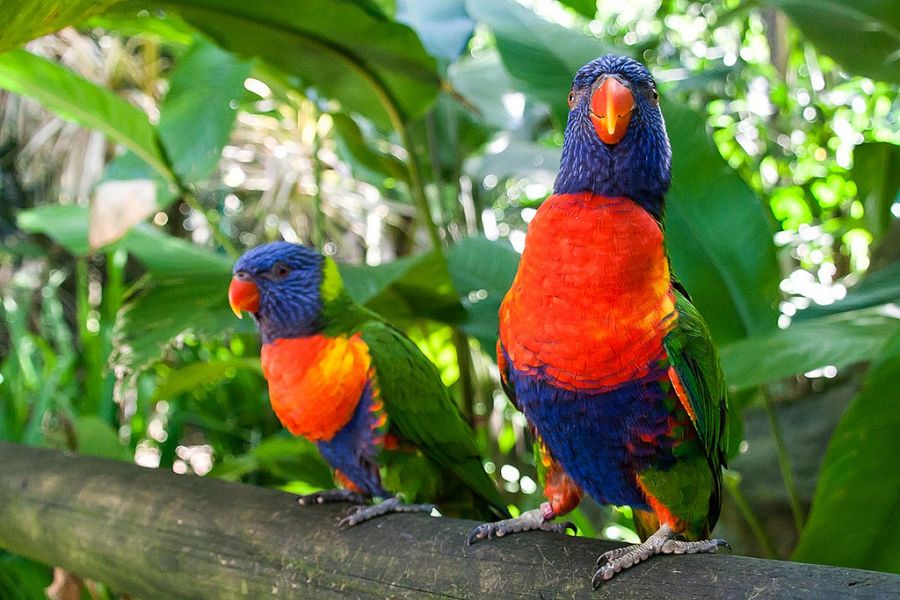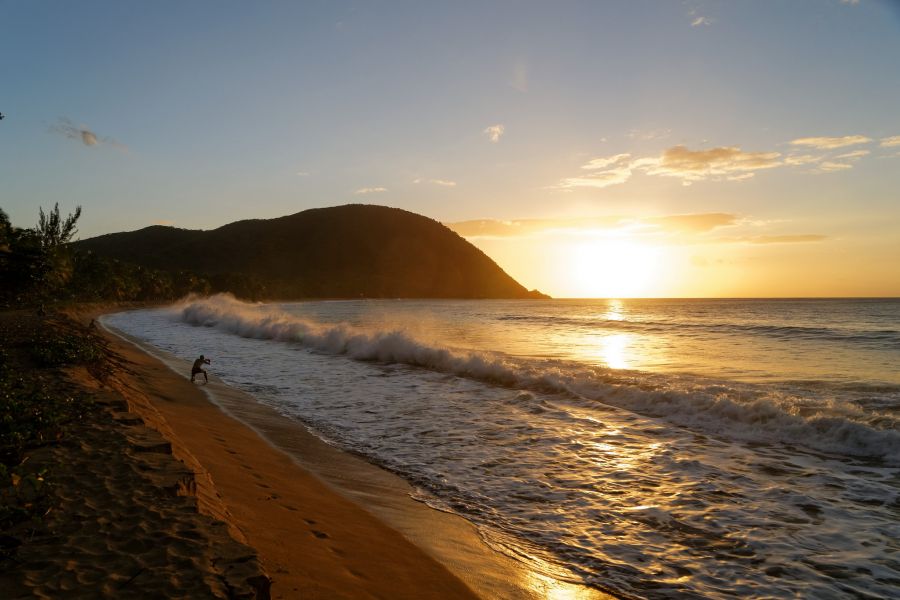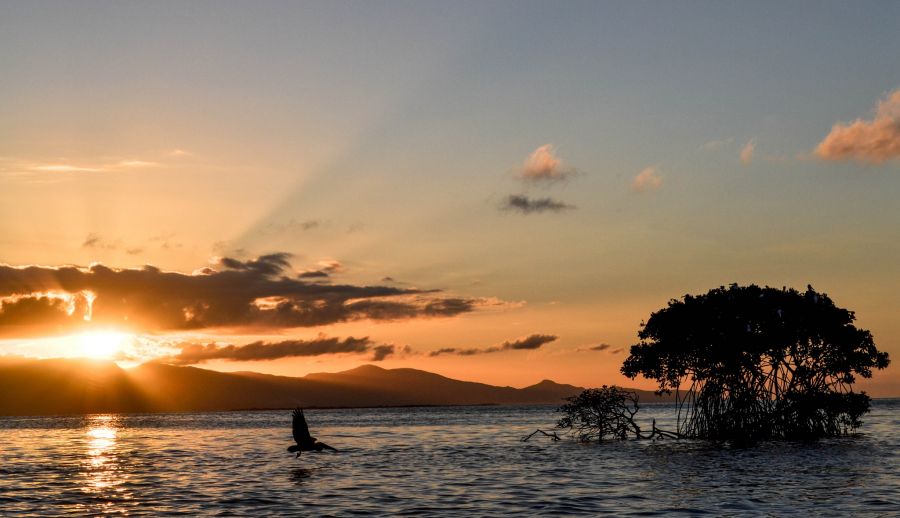Philippe, F1DUZ is currently active again as FG4KH from Guadeloupe, IOTA NA-102.
He will operate on HF Bands, including activity in REF SSB Contest.
Recent DX Spots FG4KH
QSL via home call direct, LOTW, eQSL.
Ads for direct QSL:
Philippe LEVRON, Malvaux, 49570 Montjean-sur-Loire, France.
Guadeloupe: unprecedented beauty of the surface and underwater world!
Between the Lesser Antilles - Dominica and Antigua - lies an archipelago of breathtaking beauty called Guadeloupe, which consists of five atolls - Grande-Terre, Basse-Terre, Marie-Galant, Les Saintes and Desirades - closely linked by a ferry system. Today, Guadeloupe is an overseas region of France in the Caribbean and combines a developed European infrastructure with an original Caribbean cultural heritage.
Colonization of Guadeloupe and cane plantations
Until the discovery of the island by H. Columbus, the atolls were inhabited by Carib Indians who drove out the peaceful aboriginal tribe of fishermen, the Arawaks. They called their delightful new home "the island of beautiful waters". During his second voyage across the Atlantic Ocean, the Spaniard Columbus was the first European to enter the Caribbean Sea, where, among other islands, in 1493 he discovered a group of five atolls, which he named after the deeply revered Catholic monastery of Santa Maria de Guadalupe de Extremadura (Maria of Guadalupe in Esmadura). Spanish colonizers never had economic or political influence over the islands they discovered in this part of the Atlantic.
In 1635, the French landed on the atolls, referring to the shores simply as "Guadalupe." With the help of the French Company of American Islands (Compagnie des Îles de l'Amérique), created by the Royalists for the purpose of exploration, trade and colonization, the settlers managed to negotiate a peace agreement with the Caribs. Sugar plantations became the starting point for chronicling decades of slave labor on the largest atolls, Bas Ter and Grand Ter. French farmers imported slaves from West Africa to work the fertile fields and satisfy the insatiable appetite of Europeans. Soon the number of "black" inhabitants exceeded the combined number of Indians and white colonists on the islands.
Slave labor was abolished in Guadeloupe only in 1794, after armed slaves killed more than 1,000 colonists and plantation owners. As a result of the abolition of slavery, the island became the most economically prosperous colony in the entire West Indies. The islanders gained full political rights in 1946, when Guadeloupe became an overseas department of France. Today, in memory of that difficult period in the history of Guadeloupe there is a tourist route, which includes 18 sites on all five atolls, passing which you can see and feel the monstrous legacy of the slave trade. Tourists are encouraged to visit former plantations and black workers' dwellings such as Nero, Balmont with its slave dungeon and Murat on Marie-Galante Atoll.
 Guadeloupe. Author - Luca Moglia.
Guadeloupe. Author - Luca Moglia.
Tourist routes of the main atolls
Most of Guadeloupe's most developed resorts are located along the south coast of Grand Ter Atoll between St. Francois and Gosier. Grand Ter has a national park called Pointe des Châteaux ("Castle Peak"). The attractions of the park are the hill overhanging the beautifully rugged lagoon, known as the "edge of the land" and the wooden cross placed on its summit. The limestone cliffs of Grand Terre slope gently into the Atlantic, making the atoll's beaches a surfer's paradise.
 Guadeloupe. Author - .Choco.
Guadeloupe. Author - .Choco.
Pointe-à-Pitre is a typical French Riviera-style harbor town on Grande Terre Atoll. However, it is a city of contrasts, where quaint wooden buildings with wrought iron balconies, brightly colored fishing boats and gleaming harbor boats, private luxury yachts, and tanned tourists dressed in the latest business fashions coexist in a neighborly manner. The rich smell of salty air mingles with the aroma of ferns, mossy trees and spices, which the islanders trade in the open-air markets. In the streets, you can find vendors selling souvenirs, colorful cotton dresses and fruit. Grand Ter is separated from the neighboring atoll of Bas Ter by a narrow strip of Salt River Strait, over which several bridges stand.
 Sunset, Guadeloupe. Author - laetitia lecointe.
Sunset, Guadeloupe. Author - laetitia lecointe.
Unlike its neighbor, Bas Ter is mountainous, has a much higher altitude and an active Soufrière stratovolcano. The Soufriere volcano is covered with tropical forests, which suffer greatly as a result of its eruptions. The stratovolcano of Bas Ter Atoll is the highest point in the Lesser Antilles. During dormancy, its 1,467th peak, wrapped in mists and clouds, entices visitors to Guadeloupe to explore this majestic realm. The volcano, like much of Bas Ter Atoll, is protected by Guadelupe National Park, which includes miles of lush tropical vegetation.
On the southwest side of the island is the eponymous capital of Guadeloupe, the town of Bas Ter. It is the main commercial and administrative center of the state. The most affluent islanders live in the capital or in the nearby town of St. Claude. To the north of the capital are cozy beaches and the ocean reserve Côte-Sous-le-Vent, where the world-famous French director, photographer and oceanographer Jacques Yves Cousteau filmed many of the episodes of his Odyssey.

